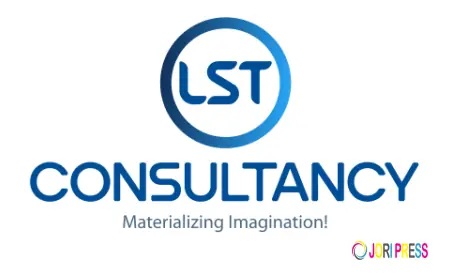The Power of an ATS Resume: How to Create a Professional Resume
The Power of an ATS Resume: How to Create a Professional Resume
The Power of an ATS Resume: How to Create a Professional Resume
Have you ever sent out dozens of resumes only to hear silence in return? It feels like shouting into the void. You spend hours tailoring your story, only to wonder if anyone even opened the file. Here’s the truth: your resume probably didn’t reach a human at all. Most companies today use Applicant Tracking Systems (ATS). Think of it like a bouncer at a club. If you don’t meet the keyword dress code, you don’t get inside. This is why creating an ATS resume is no longer optional. It’s the difference between being invisible and landing an interview.
I learned this lesson the hard way when I first applied for jobs in tech. I crafted what I thought was a beautiful resume, complete with colors and graphics. Weeks went by with no replies. A friend later told me, “Your resume probably got filtered out by AI.” That’s when I realized that the rules had changed. Recruiters are not the first audience anymore. The machine is.
In this article, we’ll explore why an ATS resume matters, how a professional resume should be structured, and how AI-driven tools like keyword optimization, tailored bullet points, and clean layouts can transform your job hunt. By the end, you’ll have a clear roadmap for building a resume that gets past the gatekeepers and lands in the hands of real decision-makers.
The Rise of the ATS: Understanding the Job Gatekeeper
Imagine applying for a job and your resume doesn’t even reach a recruiter. That’s exactly what happens with Applicant Tracking Systems. ATS software scans resumes to match them against the job description. It looks for skills, experiences, and keywords. If your resume doesn’t have them, it gets rejected before anyone sees it.
Here’s the shocking part: studies show up to 75% of resumes are rejected by ATS before reaching a recruiter. That means only a small portion even has a chance at being read. This is why a professional resume today is not just about style or storytelling. It must be machine-readable first.
When you think of ATS, picture a robot librarian. It organizes thousands of resumes and only pulls out the ones that match specific search terms. That’s why keyword optimization is so important. Without it, your resume is like a book hidden in the wrong aisle. No one will ever check it out.
What Makes an ATS Resume Different from a Regular Resume
At first glance, you might think a resume is a resume. But an ATS resume follows a different logic. It’s less about flashy design and more about structure, clarity, and readability for both machines and humans.
Here’s what sets it apart:
-
Keywords matter most: Your resume needs the same language used in the job posting.
-
Formatting is simple: No fancy templates, graphics, or unusual fonts.
-
Tailored bullet points: Each line should highlight measurable results, not vague duties.
-
Clean layouts: Sections like education, work history, and skills must be easy to parse.
-
AI checks: Tools now scan and score resumes, giving instant feedback.
Think of a professional resume as a conversation. You’re telling your story in a clear and human way. An ATS resume, on the other hand, is like coding your story so that AI understands it. The best resumes today strike a balance: human enough to impress a recruiter, but structured enough to pass the machine’s filter.
Keyword Optimization: The Secret Sauce for Getting Noticed
When I first discovered keyword optimization, it felt like I had found the cheat codes of job hunting. Keywords are the lifeblood of an AI resume. They’re the signals that tell the system, “Yes, this candidate matches what you’re looking for.”
Let’s say you’re applying for a marketing role. The job description might mention “SEO,” “content strategy,” and “Google Analytics.” If those terms aren’t in your resume, the ATS assumes you don’t have them, even if you do. That’s why copying the exact wording is critical.
Here’s a simple example:
|
Job Posting Keyword |
Weak Resume Wording |
Strong ATS-Friendly Wording |
|
SEO Optimization |
Improved website |
Led SEO optimization, increasing site traffic by 35% |
|
Content Strategy |
Created blog posts |
Designed and executed content strategy with measurable growth |
|
Google Analytics |
Tracked web stats |
Used Google Analytics to analyze traffic and boost conversions |
Notice the difference? The strong versions don’t just include the keyword. They also prove impact. That’s the sweet spot: matching the system while showing real value.
Why AI Resume Tools Are Changing the Game
Job hunting today is part art, part science. The art is telling your story. The science is using data, keywords, and AI to make sure your story gets heard. This is why AI resume tools have become so powerful.
They don’t just reformat your resume. They guide you step by step. From keyword checks to tailored bullet suggestions, from clean layouts to instant scoring, these tools act like a personal career coach. They help you land interviews faster by combining technology with recruiter insights.
I remember using an AI resume builders for the first time. It felt like someone had pulled back the curtain on job applications. Suddenly I could see what the system saw. It was empowering—and it worked.
Final Thoughts: Your Resume Is Your First Impression
At the end of the day, your ATS resume is more than just a document. It’s your ticket to opportunity. It’s the bridge between your hard work and the job you dream of. But for that bridge to stand, it needs the right structure.
Here’s the simple truth:
-
Use keywords like your life depends on it.
-
Tailor every bullet point with action and impact.
-
Keep the layout clean and ATS-friendly.
-
Leverage AI tools for instant feedback and scoring.
-
Don’t skip the cover letter if given the chance.
A professional resume is no longer just about listing jobs. It’s about strategy. With the right balance of human touch and machine logic, you can turn your story into a recruiter-ready, ATS-safe masterpiece. And once you do, those silent rejections turn into interview calls.
So, the next time you hit “submit” on a job application, you’ll know that you’re not just tossing your resume into the void. You’re handing it directly to the right people, with confidence that both AI and recruiters will take notice.
What's Your Reaction?
 Like
0
Like
0
 Dislike
0
Dislike
0
 Love
0
Love
0
 Funny
0
Funny
0
 Angry
0
Angry
0
 Sad
0
Sad
0
 Wow
0
Wow
0














































